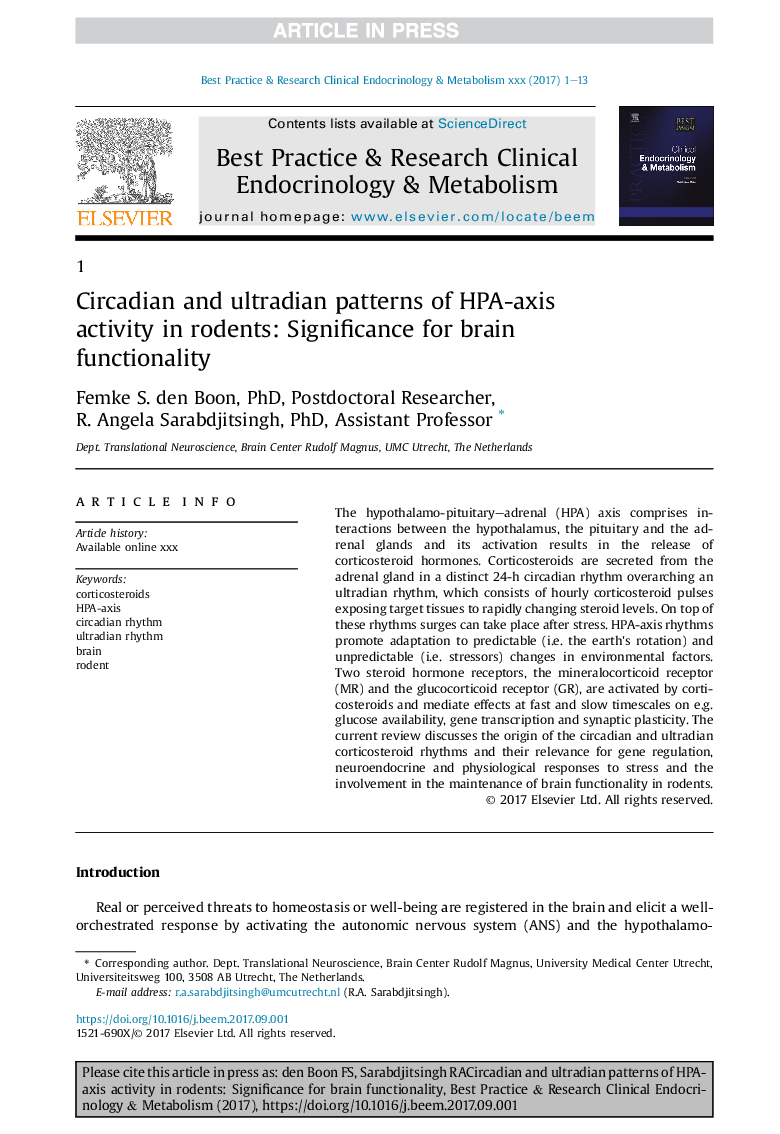| کد مقاله | کد نشریه | سال انتشار | مقاله انگلیسی | نسخه تمام متن |
|---|---|---|---|---|
| 8627450 | 1568658 | 2017 | 13 صفحه PDF | دانلود رایگان |
عنوان انگلیسی مقاله ISI
Circadian and ultradian patterns of HPA-axis activity in rodents: Significance for brain functionality
دانلود مقاله + سفارش ترجمه
دانلود مقاله ISI انگلیسی
رایگان برای ایرانیان
کلمات کلیدی
موضوعات مرتبط
علوم زیستی و بیوفناوری
بیوشیمی، ژنتیک و زیست شناسی مولکولی
علوم غدد
پیش نمایش صفحه اول مقاله

چکیده انگلیسی
The hypothalamo-pituitary-adrenal (HPA) axis comprises interactions between the hypothalamus, the pituitary and the adrenal glands and its activation results in the release of corticosteroid hormones. Corticosteroids are secreted from the adrenal gland in a distinct 24-h circadian rhythm overarching an ultradian rhythm, which consists of hourly corticosteroid pulses exposing target tissues to rapidly changing steroid levels. On top of these rhythms surges can take place after stress. HPA-axis rhythms promote adaptation to predictable (i.e. the earth's rotation) and unpredictable (i.e. stressors) changes in environmental factors. Two steroid hormone receptors, the mineralocorticoid receptor (MR) and the glucocorticoid receptor (GR), are activated by corticosteroids and mediate effects at fast and slow timescales on e.g. glucose availability, gene transcription and synaptic plasticity. The current review discusses the origin of the circadian and ultradian corticosteroid rhythms and their relevance for gene regulation, neuroendocrine and physiological responses to stress and the involvement in the maintenance of brain functionality in rodents.
ناشر
Database: Elsevier - ScienceDirect (ساینس دایرکت)
Journal: Best Practice & Research Clinical Endocrinology & Metabolism - Volume 31, Issue 5, October 2017, Pages 445-457
Journal: Best Practice & Research Clinical Endocrinology & Metabolism - Volume 31, Issue 5, October 2017, Pages 445-457
نویسندگان
Femke S. (Postdoctoral Researcher), R. Angela (Assistant Professor),